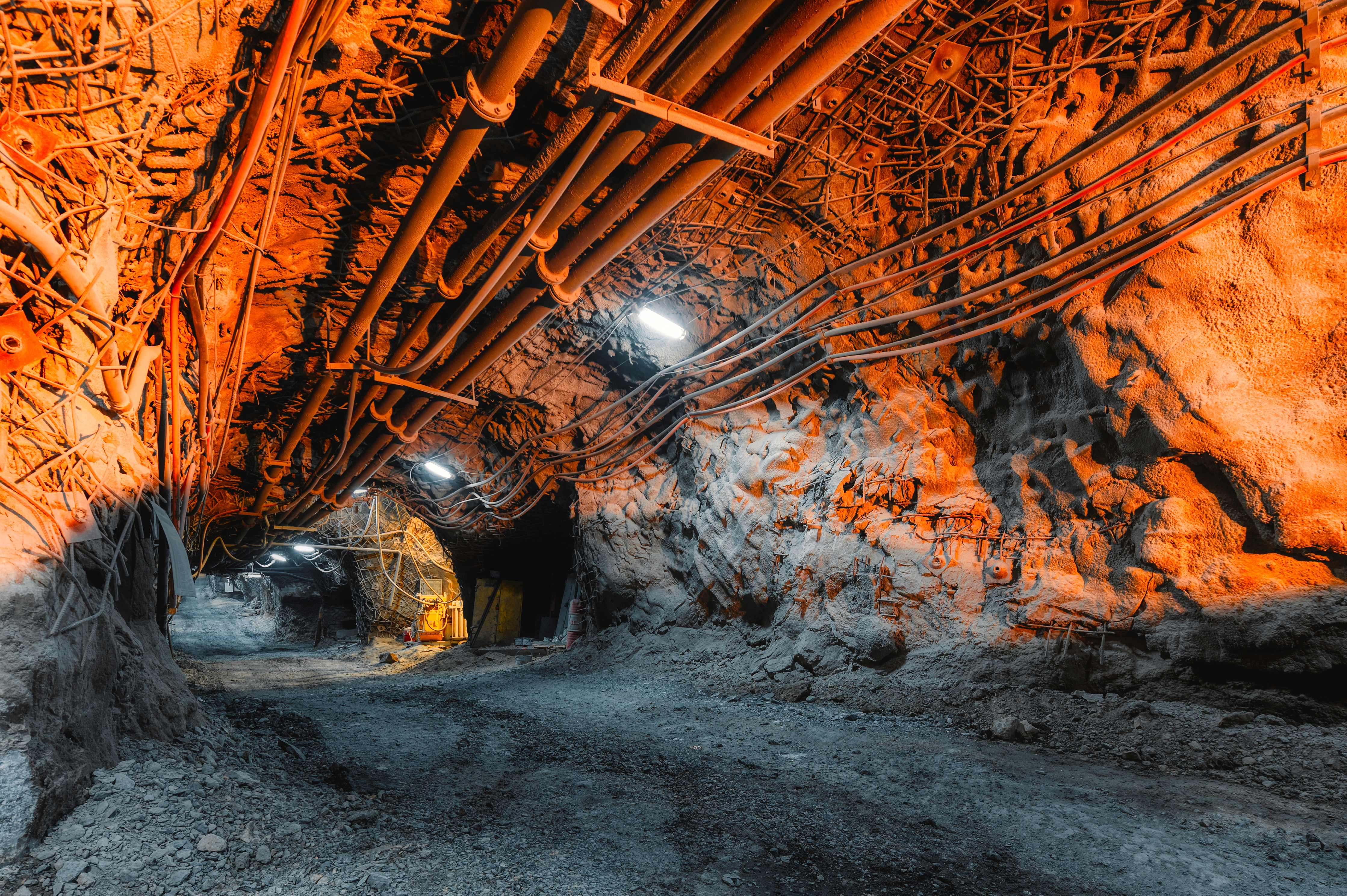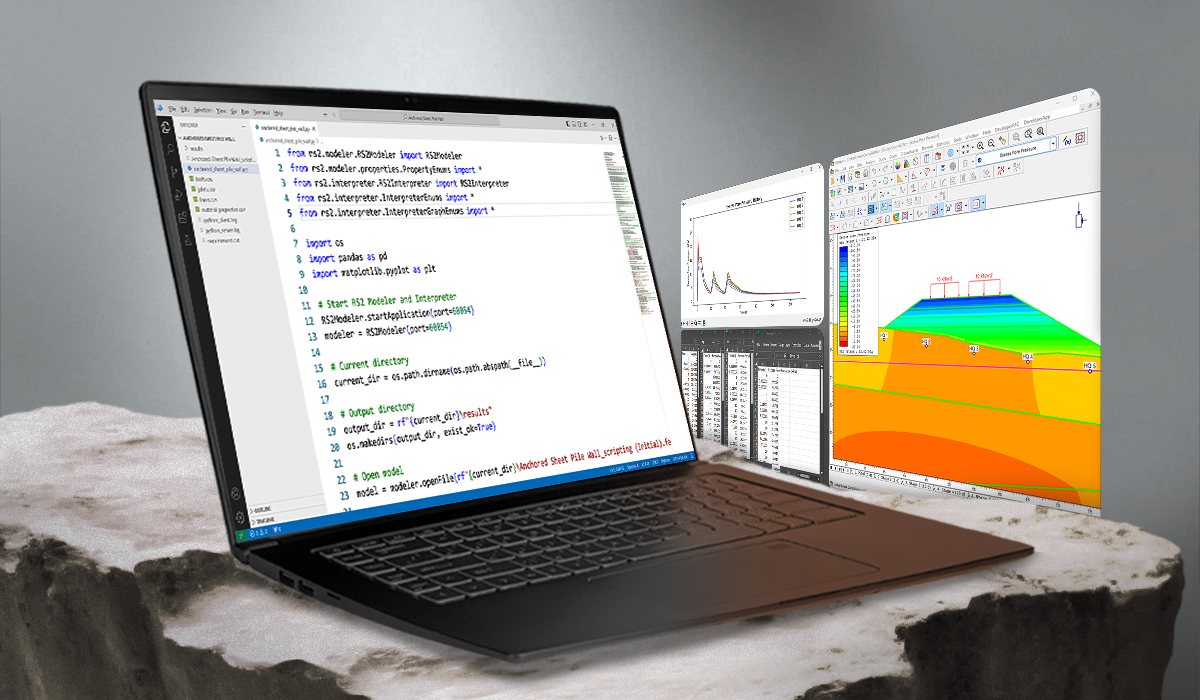This New RS2 Feature Brings Spatial Distribution Capabilities for Hydraulic Properties
Spatial variability of permeability is inherent to all geologic media and significantly impacts the groundwater and stability conditions of both surface and underground excavations. For example, the variability in shear strength and deformation parameters can lead to different failure modes from those predicted by models that assume homogeneity throughout a material volume. Spatial variability in permeability can create preferential flow paths and influence the distribution of pore pressures and flows. Areas of lower permeability may experience increased pore water pressures that potentially reduce soil strength and increase instability risks.
RS2 now offers spatial distribution capabilities for hydraulic properties, giving you the ability to realistically model alternative permeability scenarios in tunnelling and slope stability projects. By varying hydraulic properties like permeability, water content, and degree of saturation spatially, based on factors such as stress, strain, or location, you can gain a deeper understanding of how groundwater impacts engineering excavations and structures.
Keep reading to learn how you can model spatial distribution to improve your workflow.
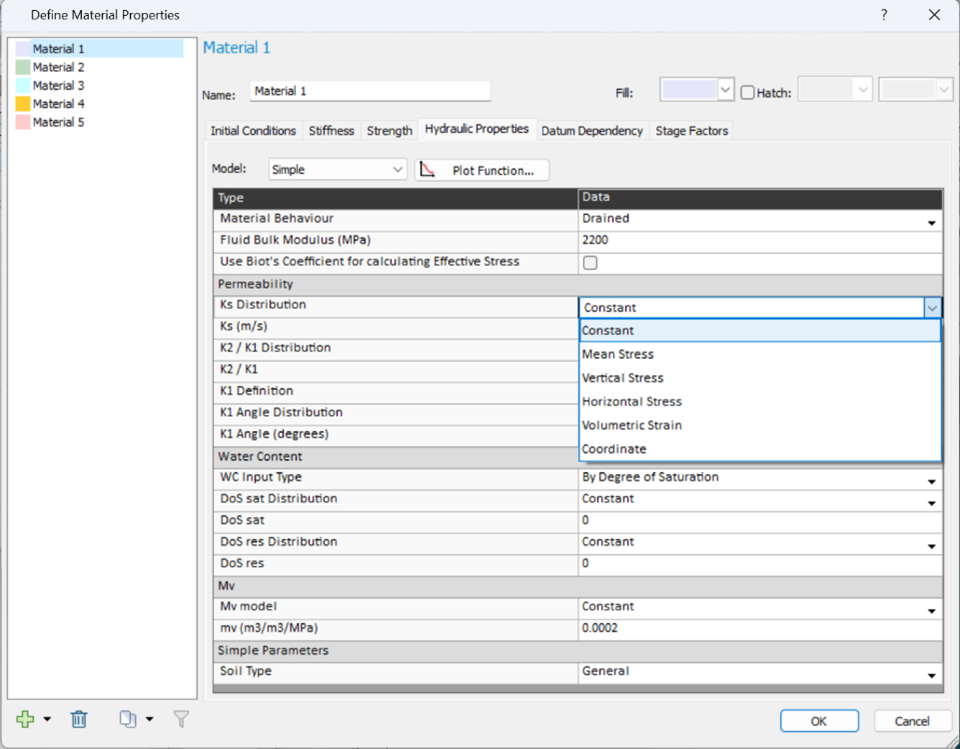
Why Spatial Distribution Matters
The ability to model spatially distributed hydraulic properties equips you to effectively handle groundwater and stress interactions. This feature helps engineers to:
- Anticipate challenges and mitigate potential failures early in the design phase.
- Improve design accuracy by addressing variability upfront and minimizing the need for reworks during later project stages.
- Gain a clearer picture of how geomaterials behave under realistic conditions.
These benefits apply across any geotechnical problem, including rock tunnelling and slope stability analysis, where permeability variation plays a role. Spatially variable models capture the anisotropic and depth-dependent nature of soil more naturally and provide a more accurate representation of subsurface conditions.
Permeability Variation on Rock Tunneling Analysis
Stress changes heavily influence permeability in geomaterials. These changes inevitably arise as a result of excavation. For example, as tunnels are excavated, stress redistribution can cause pores or fractures to close, dilate, or extend, leading to significant permeability variation.
With RS2’s new spatial hydraulic property feature, engineers can model permeability as a function of stress and capture these variations in ways that constant-value models cannot. Consequently, this capability allows you to:
- Simulate stress-dependent permeability: Use stress (or strain) permeability relationships to account for permeability reduction during compression or increases during dilation.
- Predict groundwater behaviour: Model how permeability changes impact groundwater flow around excavations for critical insights into seepage and inflow management.
- Optimize support design: Evaluate the impact of permeability variation on structural element responses like liner bending moments and bolt forces, which allows for better comprehensive support design.
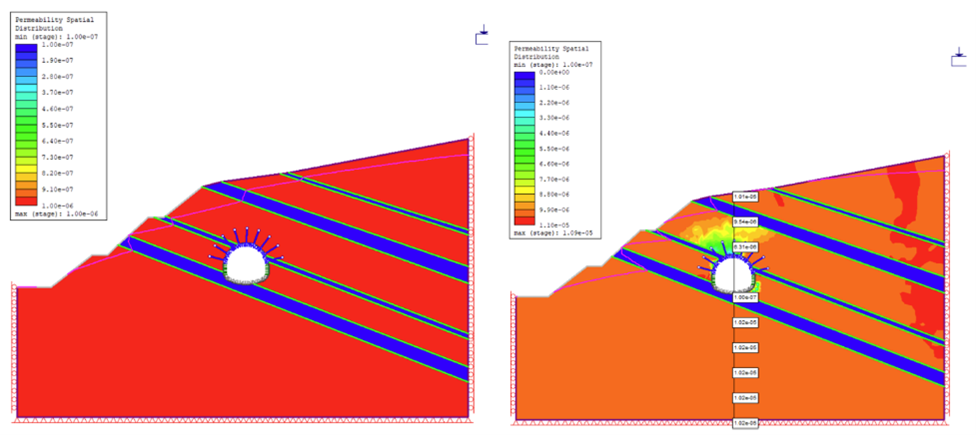
Spatial Permeability for Drawdown Slope Analysis
Drawdown (events in which the withdrawal of water in reservoirs leads to reductions in hydraulic head or water levels) in slopes with spatially varying permeability can lead to significant imbalances and instability. Spatial permeability modelling provides a way to address these complexities and predict how such slopes will respond to changing hydraulic conditions.
RS2’s spatial hydraulic properties allow you to:
- Capture variability across slopes: Model natural permeability variations in soils or rocks, which can significantly affect pore pressure distribution during drawdown.
- Analyze stability more accurately: Compare constant permeability models with spatial permeability models to understand how variations influence safety factors and failure mechanisms.
- Design better drainage systems: Simulate how water moves through variable permeability zones, enabling you to optimize drainage systems for enhanced slope stability.
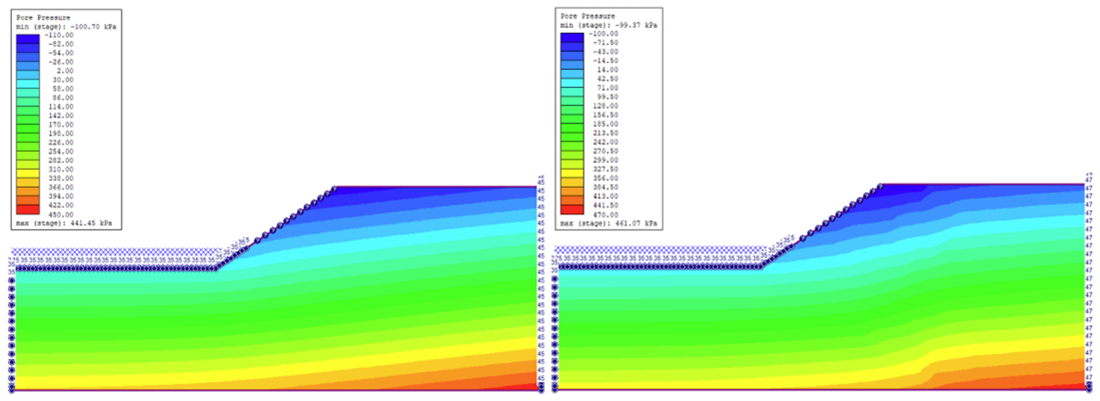
Strategies For Using Spatial Hydraulic Properties in RS2
- Start with a strong understanding of your data: Spatial modelling requires accurate input data. Take time to collect or generate variability data that reflects the conditions at your site.
- Test different scenarios: Run models with differing realizations of spatial variability to understand how changes in permeability impact your results.
- Combine with other features: Use RS2’s integrated analysis capabilities, like stress-strain modelling, to examine the interplay between hydraulic and mechanical behaviour.
Final Thoughts
By incorporating spatial variability into geotechnical and hydrogeological models, engineers can make more informed decisions, improve safety, and optimize designs for various applications. The feature can be applied to foundations, excavations, tunnels, and slope stability projects.
With RS2’s new spatial distribution feature, you can model permeability with greater accuracy. Whether you're designing tunnels, analyzing slopes, or managing drawdown risks, you’ll be better equipped to deliver reliable results.

